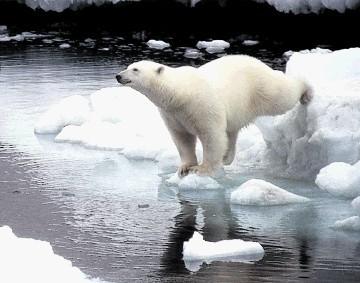
STATOIL is embarking on the most ambitious offshore Arctic exploration drilling campaign ever attempted, with targets in the Barents Sea, to the north-west and east of Russia, west of Greenland and eastern Canada.
In addition, the semi-state Norwegian company is planning nearly 40 wells on two recent Barents Sea discoveries . . . Havis and Skrugard. All told, this adds up to a multibillion-dollars programme.
“These resources will be a critical source of energy for a growing world,” Statoil’s exploration boss Tim Dodson said at the 2012 Offshore Northern Seas show in Stavanger on August 28.
Dodson said Statoil has the competence, capacity, acreage positions and experience to play the leading role in the partnerships that will unlock the Arctic.
The Seadrill rig West Hercules is being winterised for the flagship Barents Sea programme, with a late 2012 kick-off anticipated. Drilling will be year-round.
“In the Skrugard/Havis area we will drill four new prospects: Nunatak, Skavl, Iskrystall and Kramsno,” said Dobson.
“Most of these prospects have similar, direct hydrocarbon indicators, or flat spots, as the ones in the Skrugard and Havis structures. The structures are not as big but they are significant.”
Statoil’s ambition is to complete drilling of all four prospects by early summer 2013; at which point the company plans to select a development concept with a view to first commercial oil around 2018.
Further north, Statoil is looking at a set of shallow targets, just 600m below the sea floor in an area known as Hoop. This has enabled excellent seismic imaging. Direct hydrocarbon indicators have also been observed.
Targets are Wisting (operator OMV) plus Apollo and Atlantis.
Dodson said the company would complete its current Barents exploration campaign in the Hammerfest Basin with two wells near the Snohvit (Statoil) and Goliat (Eni) fields, namely Askepott and Ensis.
“As if this is not enough in itself, we also have the 22nd round coming up and we are eager to access new, quality acreage in this area,” he added.
Turning to Russia, Dodson said: “The opening of the Russian offshore offers new possibilities. We accessed four exploration licences earlier this year when we signed a deal covering more than 100,000sq.km in the joint venture with Rosneft.
They include Perseevsky in the Russian Barents and prospects in the Sea of Okhotsk … Magadan 1, Lisyansky and Kashevarovsky. Seismic is planned for the Sea of Okhotsk next year, with earliest drilling in 2016.
Offshore Eastern Canada, Dodson said a seismic survey of two newly acquired Flemish Pass licences area had started early year and he reminded that a hydrocarbons find was made on the Mizzen licence in June.
“Starting late this year we will begin a three-well drilling campaign,” said Dobson. “We will drill both Harpoon and Cupid’s Prospect in Flemish Pass. A third well will be drilled in the Jean D’Arc Basic (Federation). In addition we will participate in the (Chevfron-operated) Margaree well in the Orphan Basin.”
Further to the west, Dodson said Statoil is “building strong partnerships” in the Chukchi Sea with Conoco Phillips and with Chevron in the Beaufort Sea.
Finally to Greenland, where Statoil has three blocks off NW Greenland . . . Anu, Napu and Pitu. 3D seismic is being conducted over Anu and Napu (operator Shell). A drill or drop decision is likely within two years.
“The other block area where there is a Statoil interest is the Cairn-operated Pitu block.
“We farmed-in January 2012. Seismic was shot in 2011 and we are currently evaluating that and expect to make a decision on whether to drill or not in 2013.
“That means any exploration wells that may be drilled in these blocks will not happen until 2014 at the earliest,” Dobson added.